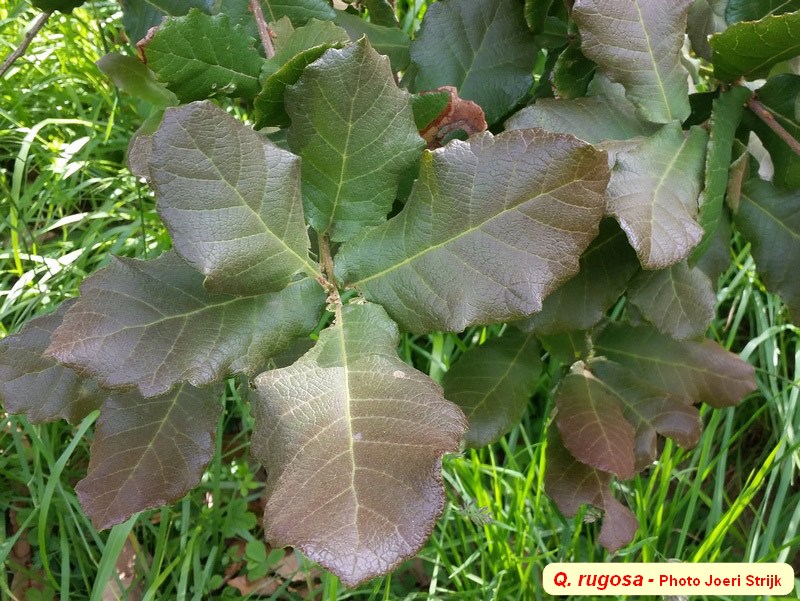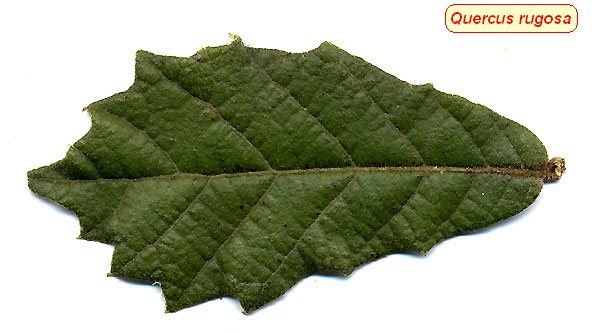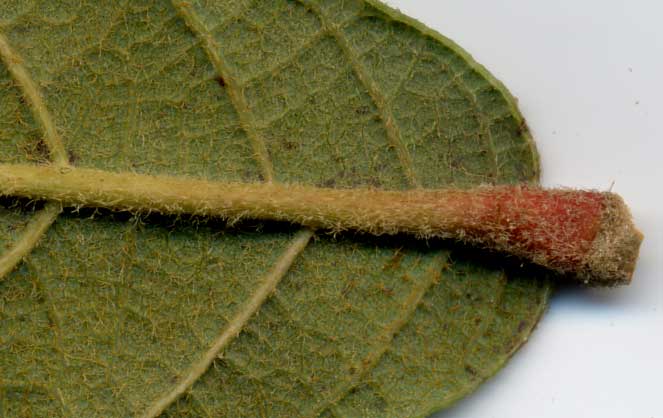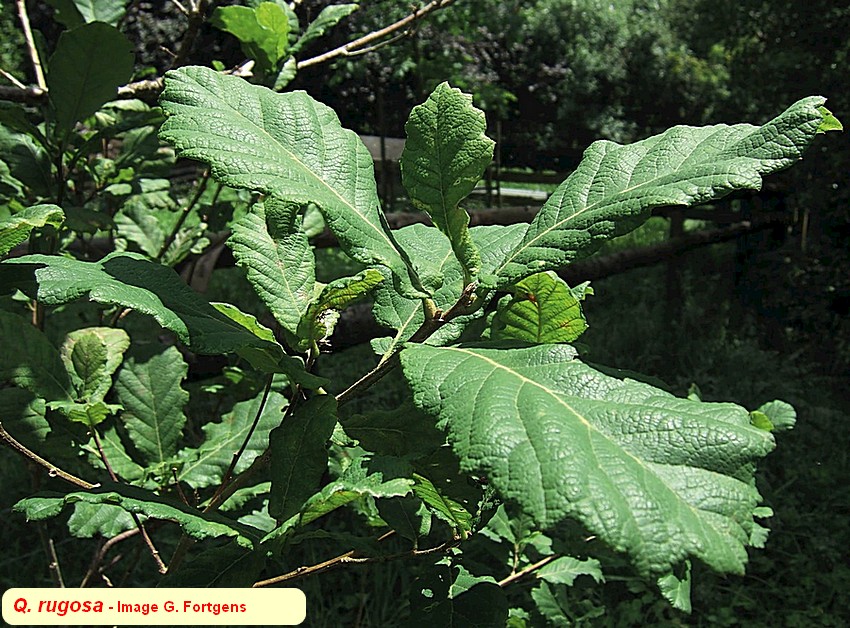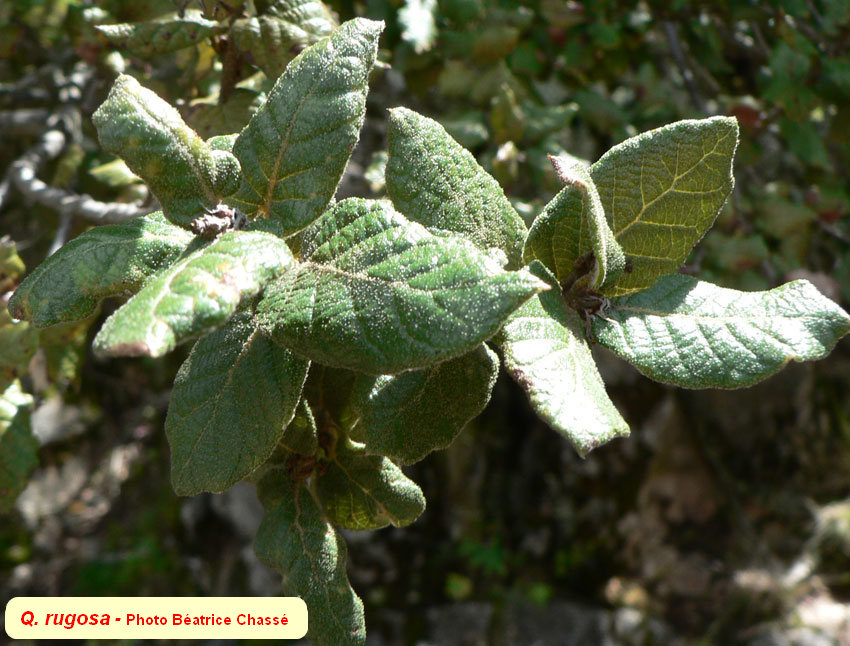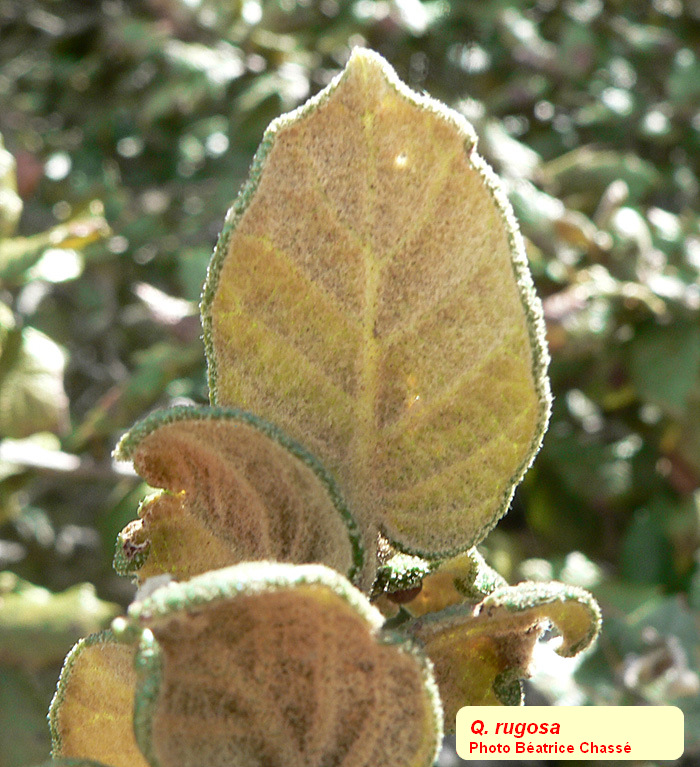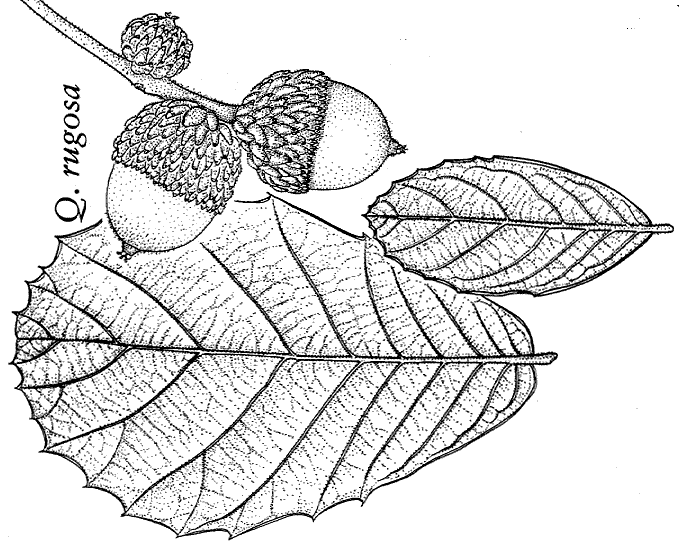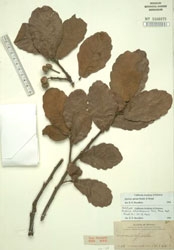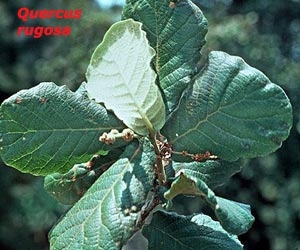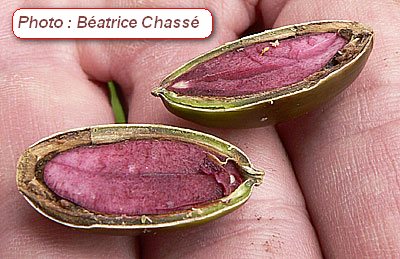| Quercus rugosa | |
| Author | Née 1801 Anales Ci. Nat. 3: 275 Diagnosis here |
| Synonyms | ariifolia Trel 1924 Diagnosis
here conglomerata Trel.1924 Diagnosis here decipiens Mart. & Gal. 1843 (A.Camus : 217) diversicolor Trel.1924 (Camus : n° 218) Diagnosis here durangensis Trel. 1924 Diagnosis here innuncupata Trel. 1924 Diagnosis here macrophylla var. rugosa (Née) Wenz. 1884 purpusii Trel. 1924 (Camus : n° 221) Diagnosis here reticulata Bonpl. 1809 (Camus : n° 215) Diagnosis here rhodophlebia Trel. 1924 Diagnosis here suchiensis Warb. 1939 uhdeana Trel. 1924 Diagnosis here vellifera Trel. 1924 |
| Local names | netleaf oak; encino cuero; doga; encino hojarasco; |
| Range | Mexico (Aguascalientes,
Baja California, Chihuahua, Coahuila, Durango, Guanajuato, Hidalgo, Jalisco,
Mexico, Michoacan, Oaxaca, Sinaloa, Puebla, San Luis Potosi, Sonora, Tamaulipas,
Tlaxcala, Veracruz, Zacatecas); S Arizona; Guatemala; 1200 - 3200 m; introduced
in Europe in 1839 (G.B.); |
| Growth habit | 5-10 m tall usually, but may reach 30 m, with trunk to 1 m in diameter; crown rounded; |
| Leaves | 4-16 x 3-10 cm; evergreen or lately deciduous; thick, strongly coriaceous, rough, convex; elliptic-oboval or nearly orbicular ; apex rounded sometimes acute, mucronate; base rounded or cordate; margin thick, flat or rolled under, cartilaginous, crenate to dentate-serrate in apical 2/3, with 3-10 pairs of mucronate teeth (mucro to 2 mm long, not curved towards the abaxial face) ; dark grey green above, lustrous, glabrous or with some stellate sessile and glandular hairs near base of midvein; beneath paler (yellowish or light brown), with 6-11-rayed, stellate, short stalked trichomes, and golden glandular hairs with concretions; 7-12 vein pairs, straight or sinuous, impressed above, prominent beneath; epidermis glaucous, bloomy, strongly bullate, papillose; petiole 5-12 mm, tomentose, pinkish; |
| Flowers | in April; |
| Fruits | acorn 1.5-2.5
cm long, pointed; singly or to 8 together; peduncle 1.5-7 cm long; enclosed
1/3 or 1/2 by cup; cup 1-1.5 cm in diameter, with appressed, oval, pointed,
tomentose scales, warty at base; maturing in 1 year between August and
November; cotyledons distinct, often reddish; |
|
Bark, twigs and |
bark dark brown, scaly, rough, quite thin; young twigs 1.5-4 mm thick, red brown, lenticellate, densely tomentose at first, becoming hairless, greyish, smooth with age; buds very small, 2-5 mm long, ovoid, red brown; stipules 5-9 mm, silky pilose, persistent; |
| Hardiness zone, habitat |
quite hardy : zone 6 (withstands -15° C); all types of soils; prefers
moist soils; slow growing; |
| Miscellaneous |
-- A. Camus : n° 219; |
| Subspecies and varieties |
Numerous
varieties, often described as species : --- var. greggii A.DC 1864; Mexico : San Antonio; (see Q. greggii) --- fo. pungens CH Mull. 1936; Mexico : Nuevo Leon; |
| Pictures |
More pictures HERE
|
